Results 7,151 to 7,160 of 12094
Thread: Anandtech News
-
07-12-17, 08:39 AM #7151
Anandtech: ASUS Launches the 360º Chromebook Flip C213: 11.6-inch Apollo Lake, Starti
Back in January of this year, ASUS announced they were coming to market with a new Chromebook targeted specifically at education-focused customers. With Google focusing on Education in their Chromebooks as of late, using these ‘convertibles’ instead of iPads, ASUS hopes to increase its market share with the newest offering.
The Chromebook Flip C213 is listed as a rugged notebook and supposed to be designed to take bumps and bruises from daily use by students. To reinforce this, it touts a MIL-STD-810G spec construction, rated to protect it from drop damage (from nearly 4 feet) and moisture (spills up to 60ml). The outside of the laptop is protected by a rubber ‘bumper’ to protect it, as well as to reinforce the I/O ports.
By virtue of the Flip nomenclature, it operates in various rotational modes. These include a standard laptop (pictured above), a tent, a stand, and tablet modes, making it an option for a wide variety of use scenarios. It also features dual cameras, a 5MP on the back and an HD camera on the front.
The 360-degree all metal hinges attach to the 11.6” touchscreen, working at a native resolution of 1366x768. There are two versions of the screen for two different use models: the first screen type uses an anti-glare finish, while the second is protected by Corning’s Gorilla Glass as well as supporting an (optional) stylus - using the Wacom EMR technology for painting, sketching, and handwriting. This version should be available in a couple of months, and carries with it a price premium over the anti-glare model.
The included 46Wh battery is said to last up to 12 hours of continuous use, which ASUS claims that it potentially eliminates the need for a charge in the middle of the day and more suitable for classroom or travel situations. The unit uses Chrome OS (59) to provide access to all of Google tools made for business and education, called the 'G Suite'. Users will get automated updates, built-in anti-virus protection, and the security that comes with using Google personal accounts.
ASUS claims that the unit is designed for easy servicing: it has a modular construction, enabling quick replacement of key components like the keyboard, touchpad, battery, motherboard, power jack daughter board, and the display panel. Modularity replacements could reduce the burden on IT resources, potentially lowering total cost of ownership in servicing.
Hardware wise, the Flip C213 uses the Intel Apollo Lake N3350 - a dual core Atom-class CPU with a base clock of 1.1 GHz capable of bursting to 2.4 GHz. DRAM capacity sits at 4GB, with static storage at 32GB of eMMC rated up to 300 MB/s sequential reads and 140 MB/s sequential writes. Wireless is provided by an 802.11AC 2x2 Wi-Fi card with Bluetooth 4.0. There are 2x USB 3.1 Gen 1 Type-C ports, 2x USB 3.1 Type-A ports, a micro SD card reader and a 3.5mm audio combo jack rounding out connectivity.
Pricing on the two versions comes in at $349 for the anti-glare screen, while the Gorilla Glass version with an optional stylus will come in at $399. You can find the former version at authorized ASUS resellers now, while the latter will be available in September.ASUS Chromebook Flip C213 Non-Stylus Version Optional Stylus Version Processor Intel Apollo Lake Dual-Core N3350
1.1 GHz Base
2.4 GHz TurboOS Chrome OS (59) Display 11.6-inch Full HD with wide-view technology DRAM 4GB Storage 32GB eMMC 5.1 Wireless 802.11ac 2x2 Wi-Fi Bluetooth 4.0 Connectivity 2x USB 3.1-C Gen 1 (5 Gbps) ports
2x USB 3.1-A ports
Micro=SD card reader
3.5mm audio combo jackBattery 46Wh LiPo Camera HD Front camera
5 MP rear cameraDimensions
(WxDxH)12.08 x 7.83 x 0.82 in.
307 x 199 x 20.9 mm12.08 x 7.83 x 0.81 in.
307 x 199 x 20.65 mmWeight 2.65lbs./ 1.2kg Price $349 $399
Related Reading- Lenovo Launches 2-in-1 Flex 11 Chromebook: Quad-Core SoC, 4 GB RAM, from $279
- Samsung Announces Updated Notebook 9, Odyssey, and Chromebook Plus/Pro
- Acer Announces The Rugged Chromebook 11 N7: Designed For Education
More...
-
07-12-17, 10:52 AM #7152
Anandtech: MSI Announces the X299 XPower Gaming AC Motherboard: Five M.2 Slots
This week MSI has announced a new X299 motherboard: the MSI X299 XPOWER GAMING AC. This is designed as a flagship motherboard for MSI's X299 range, and aims to combine gaming features and performance with the overclocking pedigree of their XPower family from previous generations.
One thing that may jump out is MSI is adjusting its aesthetic scheme and returning back to a more neutral black on the XPower, a deviation from the recent generations where the XPower would get a 'titanium' silver treatment (or even older generations of XPower that were yellow). The theme agnostic color choice is due to the prevalence of RGB LEDs, found on both the “reactor” design of the chipset heatsink as well as above the I/O area on the shroud. The basic premise is that having customizable RGB LEDs should allow the motherboard to fit into more customized and themed builds, whereas some of the previous color designs may have pigeon-holed the design of systems. To contrast the dark color scheme, MSI has used their branded 'Steel Armor' protective coverings for the x16 PCIe slots, as well as the DIMM slots and the U.2 connector.
For the X299 XPower Gaming AC, MSI uses a 14 phase power design which is claimed to help heavy overclocking, combined with a joined VRM and IO heatsink. MSI likes to promote the use of 'Military Class' components for the power delivery and other features, and claims that their use of isolated memory circuits that use optimized routing (to ensure optimal signals to and from the CPU and RAM) will allow each motherboard to reach DDR4-5000 or higher depending on the CPU memory controller, although they do not state on what cooling (likely, sub-zero).
One of the key features for this board will be the M.2 support. MSI is directly supporting three drives on board, but has also bundled a riser card for two more. For the onboard slots, MSI is using its new heatsink, the M.2 Shield Frozr. For the top M.2 slot, the heatsink is connected to the PCH heatsink in order to help move heat away. The bundled PCIe riser card is called MSI's XPander-Z, for M.2 slot expansion. This add-in-card gives a PCIe 3.0 x8 connection, and allows the user to mount two additional 110mm PCIe 3.0 x4 M.2 drives on it, giving the board a total of five M.2 slots. The expansion card setup supports Intel VROC technology, allowing a RAID-0 configuration directly from the CPU bypassing the typical throughput limits of PCIe 3.0 x4 slots.
Moving more towards the connectivity, the XPower features two Intel Gigabit LAN ports (Intel I219V and Intel I211), an 802.11ac 2x2 WiFi card, and a Realtek ALC1220 audio codec. MSI likes to promote its use of advanced audio design options, such as EMI shielding, PCB separation, corrosion resistant audio connectors, and bundled software. MSI also bundles traffic shaping software for the networking.
MSI used the ASMedia ASM3142 controller to deliver two USB 3.1 Gen2 ports, including a front panel header. They claim to have worked closely with several case manufacturers for product testing to ensure they are compatible with any MSI X299 motherboard. We've not particularly approached the ASM3142 controller in detail on AnandTech yet, but it represents a more power efficient variant of the ASM2142, which in turn is a dual-bandwidth version of the ASM1142, the first dual-port USB 3.1 (10 Gbps) controller we found on motherboards.
Gallery: MSI Announces X299 XPower Gaming AC Motherboard





At the time of this writing, pricing and availability were not available.
Related Reading- ASRock Announces X299 Professional Gaming i9 with 3-Way Multi-GPU, 10Gb Ethernet, & Wi-Fi
- GIGABYTE Launches Aorus X299 Motherboards: X299-Gaming 3, Gaming 7 and Gaming 9
- ASUS Unveils Seven X299 Motherboards: Prime, TUF and ROG
More...
-
07-12-17, 09:10 PM #7153
Anandtech: Colorful Announces iGame GeForce GTX 1080 Ti Neptune W: All-in-One Liquid
The past few months have been full of announcements and releases for all-in-one liquid cooled graphics cards, and now Colorful is joining the fray with their iGame GeForce GTX 1080 Ti Neptune W. First teased at Computex 2017, the Neptune W comes equipped with an all-in-one closed loop cooling solution, featuring a novel 240mm radiator.
While Colorful is a China-based vendor, at Computex 2017 the company also disclosed plans to launch their iGame series cards worldwide, starting in Southeast Asia and Korea; Colorful already has branches in Germany, South Korea, and Vietnam. This follows previous information hinting at future market expansion with Colorful’s iGame GTX 1080 Ti Vulcan X OC. In the meantime, the Neptune W product page is only listed on their Chinese site.
As the flagship entry in the iGame Neptune series, the 1080 Ti Neptune W is outfitted with all the LED trappings we’ve come to expect in modern ultra-high-end graphics cards. In handling the lights, Colorful offers the iGame-Zone II overclocking and LED controlling software. Toggling the “Turbo / Normal” labelled BIOS switch on the PCIe bracket activates Colorful’s “one-key” overclocking, a feature found on their other cards. This adjusts the base and boost core clocks upwards as listed in the prior table. Colorful's picture seems to show a 2 DP/2 HDMI configuration even though the specifications list 3 DisplayPorts and 1 HDMI port, so it's unclear whether the posted bracket picture is completely accurate.Colorful iGame GeForce GTX 1080 Ti Neptune W Boost Clock 1708MHz (One-Key OC)
1582MHzBase Clock 1594MHz (One-Key OC)
1480MHzMemory Clock 11000MHz VRAM 11GB GDDR5X
(352-bit)TDP 250W Outputs 3x DP, 1x HDMI, 1x DVI Power Connectors 2 x 8pin Card Dimensions 296 x 145 x 45 mm Radiator Dimensions 273 x 130 x 57mm Cooler Type AIO CLC (240mm) Price TBA
Details on the card’s cooling design were light. The water block appears to cover only the GPU while the cold plate/waterpipes complex covers the rest of the key components. In any case, a 240mm radiator setup is practically unknown in AIO graphics card designs and deserves mention. Although the extra cooling capacity is not fully harnessed with the listed TDP and the dual 8pin power configuration, the 240mm AIO CLC is an easy way for Colorful to differentiate the Neptune W from the competition, particularly if the increased cooling performance significantly enhances overclocking headroom.
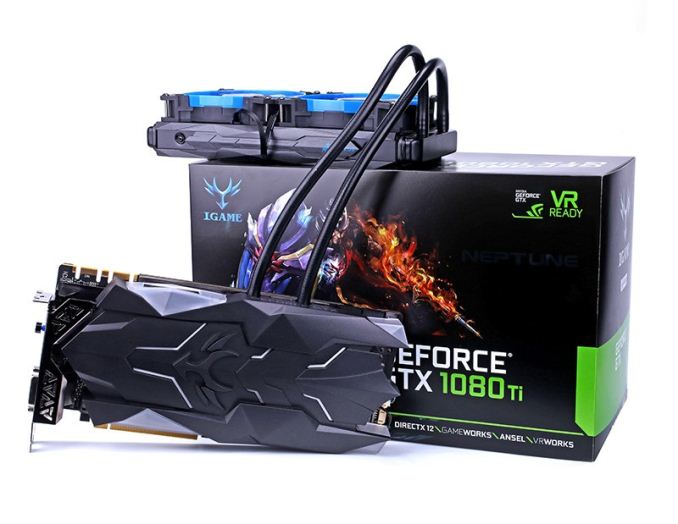
As novel as a 240mm radiator may be, Colorful is not one to stray from envelope-pushing designs: the recent past has seen them showcase a gargantuan 4-slot hybrid cooled graphics card with their iGame GTX 1080 KUDAN, while the aforementioned Vulcan X OC is furnished with an LCD screen not unlike Palit’s GALAX/KFA2 1080 Ti HOF. Such products are not surprising in the context of the company’s size: in 2015, Digitimes reported that Colorful was on track to be the second largest graphics card vendor in the world. With the potential prospect of ultra-high-end iGame cards hitting the Western markets, the Colorful name may not be unknown in the West for much longer.
Gallery: iGame 1080 Ti Neptune W





Related Reading- GIGABYTE Announces AORUS GeForce GTX 1080 Ti Waterforce Xtreme Edition 11G and Waterforce WB Xtreme Edition 11G
- ZOTAC Announces GeForce GTX 1080 Ti ArcticStorm Liquid-Cooled Graphics Card
- MSI Announces GeForce GTX 1080 Ti LIGHTNING Z
- EVGA Unveils its GeForce GTX 1080 Ti K|NGP|N Edition
More...
-
07-13-17, 09:11 AM #7154
Anandtech: AMD Threadripper 1920X and 1950X CPU Details: 12/16 Cores, 4 GHz Turbo, $7
Last night out of the blue, we received an email from AMD, sharing some of the specifications for the forthcoming Ryzen Threadripper CPUs to be announced today. Up until this point, we knew a few things – Threadripper would consist of two Zeppelin dies featuring AMD’s latest Zen core and microarchitecture, and would essentially double up on the HEDT Ryzen launch. Double dies means double pretty much everything: Threadripper would support up to 16 cores, up to 32 MB of L3 cache, quad-channel memory support, and would require a new socket/motherboard platform called X399, sporting a massive socket with 4094-pins (and also marking an LGA socket for AMD). By virtue of being sixteen cores, AMD is seemingly carving a new consumer category above HEDT/High-End Desktop, which we’ve coined the ‘Super High-End Desktop’, or SHED for short.
Today’s announcements, accompanied by a video from the CEO of AMD Dr. Lisa Su, shed some light on the new SHED processors: namely clock speeds and pricing, and a reaffirmed commitment to launching the new CPUs in August.
As you can see from the table, there are lots of question marks. We fired off a series of questions to AMD to fill in the blanks, so we can understand this product a bit better, but we were told to wait until closer to launch day. The only answer we could get was the styling on the naming. These are ‘Threadripper’ processors (rather than ThreadRipper), and are part of the Ryzen family, and the official SKU names are ‘Ryzen Threadripper 1950X’ and ‘Ryzen Threadripper 1920X’. We are likely to shorten these to ‘TR 1950X’ and ‘TR 1920X’ for expediency.AMD Ryzen CPUs Threadripper
1950XThreadripper
1920XRyzen 7
1800XSocket TR4 (LGA)
4094-pinAM4 (PGA)
1331-pinCores/Threads 16 / 32 12 / 24 8 / 16 Base Frequency 3.4 GHz 3.5 GHz 3.6 GHz Turbo Frequency 4.0 GHz 4.0 GHz 4.0 GHz XFR ? (+100?) ? (+100?) +100 MHz L3 Cache 32 MB 32 MB ? 16 MB TDP 180W* 180W* 95 W PCIe 3.0 Lanes 60 + 4 60 + 4 16 + 4 + 4 DRAM Frequency 1DPC ? ? DDR4-2666 2DPC ? ? DDR4-2400 Chipset Support X399 X399 X370
B350
A320Price (List) $999 $799 $499 Price (Retail) TBD TBD $419
*180W was confirmed after this article was originally posted.
The AMD Ryzen Threadripper 1950X
From what we do know, 16 Zen cores at $999 is about the ballpark price we were expecting. With the clock speeds of 3.4 GHz base and 4 GHz Turbo, this is essentially two Ryzen 7 1800X dies at $499 each stuck together, creating the $999 price (obviously it’s more complicated than this). Given the frequencies and the performance of these dies, the TDP is likely in the 180W range; seeing as how the Ryzen 7 1800X was a 95W CPU with slightly higher frequencies. The 1950X runs at 4.0 GHz turbo and also has access to AMD’s XFR – which will boost the processor when temperature and power allows – in jumps of +25 MHz: AMD would not comment on the maximum frequency boost of XFR, though given our experiences of the Ryzen silicon and previous Ryzen processor specifications, this is likely to be +100 MHz. We were not told if the CPUs would come with a bundled CPU cooler, although if our 180W prediction is in the right area, then substantial cooling would be needed. We expect AMD to use the same Indium-Tin solder as the Ryzen CPUs, although we were unable to get confirmation at this at this time.
Intel has already announced that they will be launching the 18-core Intel Core i9-7980XE processor later this year for $1999, although final specifications have yet to be announced. Given the launch this week of Intel’s Skylake-SP Xeon processors, there is one CPU in that line-up that would fit the bill for an i9-7980XE candidate: the Xeon Gold 6150, running at a 2.7 GHz Base and 3.7 GHz Turbo at 165W, but this part has a list price of $3358. If the Gold 6150 becomes with Core i9-7980XE, then the new SHED category of CPUs will be an exciting one to watch.Comparison: Threadripper 1950X vs Core i9-7980XE / Gold 6150 AMD
Threadripper 1950XFeatures Intel
Core i9-7980XEIntel
Xeon Gold 615016 / 32 Cores/Threads 18 / 36 18 / 36 3.4 / 4.0 GHz Base/Turbo ? 2.7 / 3.7 GHz 60 PCIe 3.0 Lanes 44 44 512 KB/core L2 Cache 1 MB/core 1 MB/core 32 MB L3 Cache 24.75 MB 24.75 MB 180W* TDP ? (165W?) 165W $999 Price (List) $1999 $3358
Comparing the two, and what we know, AMD is going to battle on many fronts. Coming in at $999 is going to be aggressive, along with an all-core turbo at 3.4 GHz or above: Intel’s chip at $1999 will likely turbo below this. Both chips will have quad-channel DRAM, supporting DDR4-2666 in 1 DIMM per channel mode (and DDR4-2400 in 2 DPC), but there are some tradeoffs. Intel Core parts do not support ECC, and AMD Threadripper parts are expected to (awaiting confirmation). Intel has the better microarchitecture in terms of pure IPC, though it will be interesting to see the real-world difference if AMD is clocked higher. AMD Threadripper processors will have access to 60 lanes of PCIe for accelerators, such as GPUs, RAID cards and other functions, with another 4 reserved by the chipset: Intel will likely be limited to 44 for accelerators but have a much better chipset in the X299 for IO support and capabilities. We suspect AMD to run a 180W TDP, and Intel at 165W, giving a slight advantage to Intel perhaps (depending on workload), and Intel will also offer AVX512 support for its CPU whereas AMD has smaller FMA and AVX engines by comparison. The die-to-die latency of AMD’s MCM will also be an interesting element to the story, depending exactly where AMD is aiming this product.
Meanwhile we have seen some of the X399 early-version motherboards back at Computex last month. With 60 PCIe lanes on each Threadripper CPU for accelerators, we are likely to see 32 or 48 used for PCIe slots (in x16/x16, x8/x8/x8/x8, x16/x16/x8/x8 or similar configurations) with up to three PCIe 3.0 x4 storage options. On the ASRock board above, there are two PCIe 3.0 x4 M.2 slots as well as a PCIe 3.0 x4 based U.2 connector for drives like Intel's SSD 750. Because these are aiming for the SHED market, features such as 10 Gigabit Ethernet ports from Aquantia are likely to feature on a number of boards as well.
The AMD Ryzen Threadripper 1920X
The 12-core Threadripper 1920X is likely positioned directly against Intel’s 10-core Core i9-7900X or Core i7-7820X, which are both available today.
The 12-core part should use 3 cores per CCX if trends of Ryzen CPUs are followed, and should have access to all 64 MB of L3 cache (we are waiting for this to be confirmed). At $799, it falls half-way between the 7900X at $999 and the 7820X at $599, but beats them both in pure core count. The 1920X has all the 60+4 PCIe lanes that the 1950X does, while Intel’s chips have 44 and 28 respectively. Again, Intel does have access to AVX512, but only the 7900X has dual 512-bit FMA engines while the 7820X has one (and the 1920X has 128-bit FMAs). The 1920X will also take the new socket.Comparison: Threadripper 1920X vs Core i7-7820X / i9-7900X AMD
Threadripper 1920XFeatures Intel
Core i7-7820XIntel
Core i9-7900X12 / 24 Cores/Threads 8 / 16 10 / 20 3.5 / 4.0 GHz Base/Turbo 3.6 / 4.5 GHz 3.3 / 4.5 GHz 60 PCIe 3.0 Lanes 28 44 512 KB/core L2 Cache 1 MB/core 1 MB/core32 MB ? L3 Cache 8.25 MB 11 MB 180W* TDP 140W 140W $799 Price (List) $599 $999
In a series of tests AMD performed, to accompany the launch, they ran Cinebench R15 and got the following scores:
AMD's Cinebench Results Cores/
ThreadsBase/
TurboList CB15
ScoreAMD Threadripper 1950X 16C/32T 3.4/4.0 $999 3062 AMD Threadripper 1920X 12C/24T 3.5/4.0 $799 2431 Intel Core i9-7900X 10C/20T 3.3/4.3 $999 2167 Test Setups from AMD can be found here.AMD is set to provide some interesting competition in the HEDT and SHED spaces, and we fully suspect AMD to go after the more traditional floating point crowd for these new processors. We will probably see some talk about gaming performance as well, just because of the draw of the news. We’ve still got a number of questions for AMD:
- Will the ThreadRipper family have more than two parts in the future?
- Do both 16-core and 12-core parts have access to all 32MB of L3 cache?
- Can you reconfirm the 12-core part is using 3 cores per CCX?
- Is the Infinity Fabric bandwidth between the two dies the same as in EPYC (42 GB/s bidirectional)?
- This corresponds to an Infinity Fabric data rate of 10.4 GT/s? Or is it declocked to 9.6 GT/s or 8.0 GT/s?
- What is the official memory support for the TR CPUs? DDR4-2666?
Is that at 2 DIMMs per channel or 1 DIMM per channel? - What are the TDP numbers for both TR processors? (Edit: AMD's System Setups confirm 180W)
- Do they come with any pre-bundled coolers? If not, what coolers will AMD recommend?
- Are those prices 1k unit prices or MSRPs? If the former, what are the MSRPs?
- Can you confirm if XFR for these CPUs is +100 MHz?
- What are the largest DDR4 memory modules that TR supports? (e.g. 16GB UDIMM or up to 32/64/128GB RDIMM/LRDIMM?)
- Did AMD give the motherboard manufacturers any ball-park figures for motherboard pricing to aim for? At what pricing should we expect the entry/mid-range motherboards to appear at?
- What markets are AMD targeting with the ThreadRipper launch?
- Will both CPUs be available worldwide on the same day, or will there be a staggered regional launch?
- Can you confirm that ThreadRipper is using an Indium-Tin solder between the die and the heatspreader?
- For the 64 PCIe lanes (60+4), are there any limitations on any of the PCIe root complexes?
- If 3.4G/3.5G are the base frequencies, what are the all-core turbo frequencies?
- How many cores will TR sustain for the top turbo frequency? (e.g. 2 cores at 4 GHz, or 4 cores at 4 GHz?)
Some of our readers might argue that some of these answers have been exposed in leaks – from our perspective, getting confirmation from AMD (even on the minor points) is critical here. We’re going to have to wait until nearer the launch to get the answers to these questions. AMD have reaffirmed they are aiming for an early August launch, with more info at SIGGRAPH in a couple of weeks.
Dell's Area 51 Threadripper
A side note: Dell's Area 51 Threadripper desktop will be available for pre-order on July 27th – it would appear that Dell has an OEM launch day exclusive at this time, so we might see some more details then. The Area 51 will ship after the 27th; that is just the pre-order date.
There’s Some Ryzen 3 TooAlienware Area-51 Threadripper Edition Processor AMD Ryzen Threadripper (Up to 16C/32T) Memory Up To 64 GB 2933 MHz DDR4 (4x DIMM) Graphics Up to 2 x Nvidia GeForce GTX 1080 Ti in SLI or
Up to 3 x AMD Radeon RX 580 in CrossfireStorage HDD: Up to 2TB
SSD (M.2 PCIe): Up to 1TBWireless Dell 1820 802.11ac 2x2 or
Killer 1535 802.11ac 2x2 Wi-FiFront 2x USB 3.1 Gen 1 Type-A
Optical Drive
Headphone Jack
Microphone Jack
Media Card ReaderRear 10 USB ports (unspecified form-factors)
Includes 1 USB Type-C (w/ 15W Powershare)
Dual Killer Networks E2500 Gigabit NICs
SPDIF Port
5 1/8" Audio JacksDimensions 569 x 638 x 272 mm Weight Starting at 28kg Pricing TBA
Alongside the Threadripper news, AMD gave some small hints about Ryzen 3 as well. Ryzen 3 is the quad-core versions of Ryzen using the same silicon as Ryzen 5 and Ryzen 7, but with cores disabled and selling at lower price points. We got a sneaky peak at some of the Ryzen 3 specifications when a different AMD department announced the equivalent Ryzen 3 PRO processors, but AMD gave us the following to chew on:
When we got our information from AMD, prices were still being decided, but the official launch day will be July 27th. One only one of the CPUs uses the full XFR, and AMD didn’t provide TDP numbers but we suspect they will be listed as 65W parts. AMD did not comment if these CPUs would have coolers bundled with them or not. Again, we’ll have to wait until closer to launch day/on launch day for this information.AMD Ryzen SKUs Cores/
ThreadsBase/
TurboXFR L3 TDP Cost Cooler Ryzen 7 1800X 8/16 3.6/4.0 +100 16 MB 95 W $499 - Ryzen 7 1700X 8/16 3.4/3.8 +100 16 MB 95 W $399 - Ryzen 7 1700 8/16 3.0/3.7 +50 16 MB 65 W $329 Spire
RGBRyzen 5 1600X 6/12 3.6/4.0 +100 16 MB 95 W $249 - Ryzen 5 1600 6/12 3.2/3.6 +100 16 MB 65 W $219 Spire Ryzen 5 1500X 4/8 3.5/3.7 +200 16 MB 65 W $189 Spire Ryzen 5 1400 4/8 3.2/3.4 +50 8 MB 65 W $169 Stealth Ryzen 3 1300X 4/4 3.5/3.7 ? 8 MB ? ? ? ? Ryzen 3 1200 4/4 3.1/3.4 ? 8 MB ? ? ?
For users keen on Bristol Ridge information, I am still poking AMD. I’m still being told that it will be launched into the retail channel for consumers, but not at this time.
Threadripper 2
The future....
Perhaps not - just a clever photoshop. Source: Reddit
Related Reading- The AMD Zen and Ryzen 7 Review: A Deep Dive on 1800X, 1700X and 1700
- The AMD Ryzen 5 1600X vs Core i5 Review: Twelve Threads vs Four at $250
- AMD Inadvertently Reveals Ryzen 3 1300 & 1200 Details
- ASRock Gives AMD Ryzen Mini-ITX Treatment, Launches X370 Gaming ITX/ac
More...
-
07-13-17, 10:35 AM #7155
Anandtech: Patriot Publishes List of AMD Ryzen Compatible DIMMs: Up to DDR4-3400, 64
Patriot has published a list of its memory modules that are verified and compatible with AMD Ryzen processors. This includes the Viper 4 and Viper Elite modules that are already on the market, and the announcement was made after the company ran extensive tests of its DDR4 DIMMs on different platforms supporting AMD’s latest CPUs.
As previously reported, with AMD’s release of its Zen based CPUs a few months ago, there were some growing pains in the new platform, particularly with RAM speed and compatibility. As it turned out, not all high-end DDR4 memory modules (at the time) would work with AMD Ryzen processors at their labeled data transfer rates. As a result, a number of DDR4 DIMM suppliers have released modules specifically qualified for enthusiast-grade AMD Ryzen-based systems and factory tested for compatibility. Moreover, AMD is working with motherboard makers to improve compatibility of its Ryzen platforms with memory modules via BIOS updates, recently promoting its AGESA 1.0.0.6 update. In the meantime, end users are advised to get DDR4 DIMMs that are labeled for AM4 to ensure compatibility - these modules should be factory-tested to be compatible with the AMD Ryzen.
Patriot has tested dozens of its single unit DIMMs, and as dual-/quad channel kits, with multiple motherboards from ASUS, ASRock, GIGABYTE and MSI based on AMD’s X370, B350 and B320 chipsets (see the details in the table below) for compatibility with AMD Ryzen 7 and Ryzen 5 CPUs. Among the tested modules are Patriot’s Viper 4 and Viper Elite DIMMs with 4 GB, 8 GB and 16 GB capacities rated to operate at 2133-3400 MT/s with CL15 and CL16 timings. The company published its list of AMD Ryzen-compatible DDR4 DIMMs and we republish it below.
All of these modules are already on the market in single-, dual-, and quad-channel configurations using capacities from 8 GB to 64 GB. With this list, it should be easy to find out about compatibility of Patriot's Viper 4 and Viper Elite with AMD’s latest chips by checking out their model numbers.AMD Ryzen and Patriot DDR4 DIMMs Compatibility | Modules Product Family Specs Model Numbers Type Viper 4 16GB 3400 MT/s CL16
8GB 3400 MT/s CL16
8GB 3200 MT/s CL16
8GB 3000 MT/s CL16
16GB 2800 MT/s CL16
16GB 2666 MT/s CL15
32GB 2400 MT/s CL15
16GB 2400 MT/s CL15
8GB 2400 MT/s CL15
8GB 2400 MT/s CL15
4GB 2400 MT/s CL15
32GB 3200 MT/s CL16
16GB 3200 MT/s CL16
32GB 3000 MT/s CL16
16GB 3000 MT/s CL16
32GB 2800 MT/s CL16
8GB 2800 MT/s CL16
32GB 2666 MT/s CL15
8GB 2666 MT/s CL15
32GB 3000 MT/s CL16
16GB 3000 MT/s CL16PV416G340C6K
PV48G340C6K
PV48G320C6K
PV48G300C6K
PV416G280C6K
PV416G266C5K
PV432G240C5K
PV416G240C5K
PV48G240C5K
PV48G240C5
PV44G240C5
PV432G320C6K
PV416G320C6K
PV432G300C6K
PV416G300C6K
PV432G280C6K
PV48G280C6K
PV432G266C5K
PV48G266C5K
PV432G300C6QK
PV416G300C6QKdual-channel
dual-channel
dual-channel
dual-channel
dual-channel
dual-channel
dual-channel
dual-channel
dual-channel
single-channel
single-channel
dual-channel
dual-channel
dual-channel
dual-channel
dual-channel
dual-channel
dual-channel
dual-channel
quad-channel
quad-channelViper Elite 16GB 3000 MT/s CL16
16GB 2800 MT/s CL16
32G 2666 MT/s CL16
16GB 2400 MT/s CL15
8GB 2400 MT/s CL15
32GB 2133 MT/s CL14
16GB 2133 MT/s CL14
8GB 2133 MT/s CL14
16GB 3000 MT/s CL15
16GB 3200 MT/s C16
8GB 3200 MT/s C16
32GB 2800 MT/s CL16
32GB 2400 MT/s CL15
8GB 2133 MT/s CL14
4GB 2133 MT/s CL14
16GB 2400 MT/s CL16
8GB 2400 MT/s CL16
4GB 2400 MT/s CL16
16GB 3200 MT/s CL16
8GB 3200 MT/s CL16
16GB 3000 MT/s CL16
8GB 3000 MT/s CL16
32GB 2800 MT/s CL16
16GB 2800 MT/s CL16
8GB 2800 MT/s CL16
32GB 2400 MT/s CL15
32GB 2133 MT/s CL14
64GB 3000 MT/s C16
64GB 2800 MT/s CL16
64GB 3000 MT/s C16
8GB 3000 MT/s CL16
8GB 2800 MT/s CL16
16G 2666 MT/s CL16
8GB 2666 MT/s CL16
16GB 2400 MT/s CL15
8GB 2400 MT/s CL15PVE416G300C6KBL
PVE416G280C6KBL
PVE432G266C6KBL
PVE416G240C5KRD
PVE48G240C5KRD
PVE432G213C4KGY
PVE416G213C4KGY
PVE48G213C4KGY
PVE416G300C5KGY
PVE416G320C6KGY
PVE48G320C6KGY
PVE432G280C6KGY
PVE432G240C5KGY
PVE48G213C4GY
PVE44G213C4GY
PVE416G240C6GY
PVE48G240C6GY
PVE44G240C6GY
PVE416G320C6KRD
PVE48G320C6KRD
PVE416G300C6KRD
PVE48G300C6KRD
PVE432G280C6KRD
PVE416G280C6KRD
PVE48G280C6KRD
PVE432G240C5KRD
PVE432G213C4KRD
PVE464G300C6QKR
PVE464G280C6QKR
PVE464G300C6QKG
PVE48G300C6KBL
PVE48G280C6KBL
PVE416G266C6KBL
PVE48G266C6KBL
PVE416G240C5KBL
PVE48G240C5KBLdual-channel
dual-channel
dual-channel
dual-channel
dual-channel
dual-channel
dual-channel
dual-channel
dual-channel
dual-channel
dual-channel
dual-channel
dual-channel
single-channel
single-channel
single-channel
single-channel
single-channel
dual-channel
dual-channel
dual-channel
dual-channel
dual-channel
dual-channel
dual-channel
dual-channel
dual-channel
quad-channel
quad-channel
quad-channel
dual-channel
dual-channel
dual-channel
dual-channel
dual-channel
dual-channel
Related ReadingAMD Ryzen and Patriot DDR4 DIMMs Compatibility | Motherboards Chipset ASUS ASRock GIGABYTE MSI X370 Crosshair VI Hero X370 Tachi AX370 Gaming K5 X370 XPOWER GAMING TITANIUM X370 Killer SLI AX370 Gaming K7 X370 SLI PLUS B350 PRIME B350-PLUS AB350M Pro4 - - AB350 Gaming K4 AB350M-HDV A320 - A320M Pro4 A320M GAMING PRO A320M-HDV - AMD Announces Ryzen AGESA 1.0.0.6 Update: Enables Memory Clocks Up To DDR4-4000
- The AMD Zen and Ryzen 7 Review: A Deep Dive on 1800X, 1700X and 1700
- The AMD Ryzen 5 1600X vs Core i5 Review: Twelve Threads vs Four at $250
- AMD Inadvertently Reveals Ryzen 3 1300 & 1200 Details
More...
-
07-13-17, 12:42 PM #7156
Anandtech: TYAN Launches Latest Generation Skylake-SP Xeon Server Platforms
A few weeks ago we talked about Tyan’s demonstration of two new HPC servers for high-performance computing and deep workloads, the Tyan FT77D-B7109 and FT48B-B1700. Tyan looks to continue updating their HPC server platform using Intel's newly launched Skylake-SP Xeons, and this week have added the GA88-B5631, TN200-B7108-X4S, and GT62F-B5630 to their lineup.
A peer-to-peer single root complex 1U server, the GA88-B5631 server platform can be used for cognitive computing workloads like AI and Machine Learning. This platform supports up to four Xeon Phi coprocessors and a full height / half length PCIe x16 card, allowing a networking adapter to reach speeds of up to 100 Gb/s with items like EDR InifinBand or 100 Gigabit Ethernet. The server has 12 DIMM slots (6 channels) supporting capacities up to 384GB with RDIMMs, or up to 1536GB using 3DS (3 Dimensional Stacked)/LRDIMMs. As for connectivity, the server has two 10 GbE ports utilizing Intel's X550-AT2 controller, and another for IPMI duties. On the storage side of things, the GA88-B5631 has two SATA3 and two SATA-DOM (Disk on Module) ports. It supports RAID 0/1/10/5 with four SATA devices.
Tyan’s cloud computing and storage platforms continue to grow with the addition of the TN200-B7108-X4S. This dual-socket 2U 4 node all-flash server platform will support up to 24 2.5” NVMe U.2/SATA drives, with each node controlling eight NVMe devices setup across six PCIe x4 NVMe U.2 hot-swap drive bays (front) as well as a pair of integrated 2280/22110 NVMe M.2 ports. Totaling 16 DIMMs (per blade), users can have up to 512GB in RDIMMs, or 2048GB in LRDIMM 3DS. The platform has support for 100G Omni-Path Fabric as well. When using all four blades, users have a total of eight CPU sockets, 64 DIMM slots, and 32 NVMe devices with a total of 8192 GB of RAM. Tyan believes this is “an ideal platform for High Performance Computing workloads and hyper-converged all-flash storage applications."
The last new product, the GT62F-B5630, is a 1U server platform designed for hybrid NVMe/SATA cache data storage. The chassis supports up to eight hot-swap NVMe U.2 drives and an OCP v2.0 LAN Mezzanine slot, which in turn supports networking speeds up to 100 Gb/s. Tyan says the single CPU socket makes it ideal for platform workloads which operate best within a single NUMA domain (since it does not have to access another processor's memory) and require large amounts of high-speed flash. For example, media streaming applications.
Tyan did not supply the information on when these will be for sale, but expect to see these soon now that the Xeon Skylake-SP family has been released.
Related Reading:
- Sizing Up Servers: Intel's Sklake-SP Xeon versus AMD's EPYC 7000 - The Server CPU Battle of the Decade?
- Intel Unveils the Xeon Scalable Processor Family: Skylake-SP in Bronze, Silver, Gold, and Platinum
- TYAN Shows Two Skylake-SP Based HPC Servers with Up to 8 Xeon Phi/Tesla Modules
More...
-
07-14-17, 09:23 AM #7157
Anandtech: ADATA Announces XPG Gammix S10: 3D TLC, SM2260, 1.7 GB/s Seq. Read, Radiat
ADATA this week launched yet another family of midrange SSDs aimed at gamers. The XPG Gammix S10 products are based on a well-known controller from Silicon Motion and resemble the company’s XPG SX7000 series announced in April. The new drives are equipped with a radiator to avoid performance throttling, and while using the M.2 form factor, will only fit into desktops as a consequence.
Over the past few quarters ADATA become one the largest independent vendors of 3D NAND-based SSDs due to the fact that it has managed to secure supply of 3D TLC and 3D MLC NAND flash from Micron. So far, the company has introduced multiple 3D NAND-based SSDs, including drives with SATA and PCIe/NVMe interfaces featuring different controllers from Silicon Motion and Maxiotek. The ADATA XPG SX7000-series drives powered by the SMI SM2260 controller and Micron’s 3D TLC NAND are among of the company’s recently launched drives aimed at performance mainstream PCs. As it appears, in the near future such SSDs will be joined by the new XPG Gammix S10 family, which use the same controller and 3D TLC NAND memory from Micron, but are equipped with a radiator to ensure lack of overheating and consistent performance. ADATA is not commenting on whether the XPG SX7000 and the XPG Gammix S10 are essentially the same SSDs, but they have exactly the same performance numbers and even their model numbers look similar (ASX7000NP-512GT-C => ASX7000NPC-512GT-C).
Speaking of performance, we know a lot what to expect from the SMI SM2260 in general and from the ADATA XPG SX7000/Gammix S10 in particular. As mentioned in the initial XPG SX7000 coverage, the drives are very different from each other due to the level of parallelism afforded by the controller/NAND combinations. The 512 GB models are rated for sequential read speeds up to 1750 MB/s, while sequential writes can reach up to 860 MB/s when pseudo-SLC caching is used. As for random performance, the 512 GB drive can offer up to 130K/140K 4 KB read/write IOPS. When it comes to the XPG SX7000/XPG Gammix S10 128 GB, the lowest capacity of the set, we are dealing with a drive capable of up to 660/450 MB/s sequential read/write performance as well as 35K/95K read/write IOPS.
This drive is slightly faster than SATA SSDs based on TLC NAND, but it should offer higher endurance because 3D TLC NAND is made using larger process technologies and can account for voltage drift better. Keep in mind that the XPG Gammix S10 are equipped with a radiator and therefore their performance under load may be slightly higher when compared to the predecessor. In the meantime, the XPG Gammix S10 will hardly fit into laptops because of its dimensions.
Meanwhile when it comes to endurance ratings, the ADATA XPG SX7000 and the XPG Gammix S10 are, again, exactly the same: the 128 GB SSD is rated for 80 TBW, the 512 GB version is capable of 320 TBW and the 1 TB model can handle 640 TBW (equals to around 0.3 DWPD (drive writes per day) across the warranty lifetime). Both SSD series come with a five-year limited warranty and are rated for 2 million hours MTBF.
ADATA did not announce MSRPs for the XPG Gammix S10 SSDs, but since the new drives are essentially the XPG SX7000 products equipped with radiators, do not expect their actual prices to be significantly different.ADATA XPG Gammix S10 Specifications Capacity 128 GB 256 GB 512 GB 1 TB Model Number ASX7000NPC-
128GT-CASX7000NPC-
256GT-CASX7000NPC-
512GT-CASX7000NPC-
1TT-CController Silicon Motion SM2260 NAND Flash 3D TLC NAND Form-Factor, Interface M.2-2280, PCIe 3.0 x4, NVMe 1.2 Sequential Read 660 MB/s 1370 MB/s 1750 MB/s Sequential Write 450 MB/s 820 MB/s 860 MB/s 850 MB/s Random Read IOPS 35K IOPS 70K IOPS 130K IOPS Random Write IOPS 95K IOPS 130K IOPS 140K IOPS Pseudo-SLC Caching Supported DRAM Buffer Yes, capacity unknown TCG Opal Encryption No Power Management DevSleep, Slumber Warranty 5 years MTBF 2,000,000 hours MSRP Unknown Unknown Unknown Unknown
Related Reading:
- ADATA Announces The XPG SX7000 Series SSDs: Up to 1 TB, M.2, PCIe 3.0 x4
- Previewing Silicon Motion SM2260 NVMe Controller With 3D MLC NAND (512GB)
- ADATA Launches XPG SX8000: High-End M.2 NVMe SSD Featuring 3D MLC NAND
- ADATA Launches the SU700 SSD Range: Maxiotek MK8115, 3D TLC, Up to 960 GB
More...
-
07-14-17, 11:29 AM #7158
Anandtech: Logitech Acquires ASTRO Gaming, Strengthens Portfolio of Headsets for Cons
In a bid to expand its portfolio of products, Logitech this week acquired ASTRO Gaming, whom is primarily known for its high-end headsets for consoles and PCs. The move will help Logitech to address the console gaming market with high-margin products and strengthen its headset lineup in general.
Logitech’s family of products includes tens of mice and keyboards, many of which are designed for gamers with different requirements and budgets. But when it comes to headsets, Logitech (only) offers eight models priced from $35 to $200. By acquiring ASTRO Gaming, the company gets a portfolio of headsets that includes dozens of SKUs with different accessories and designs, many of which retail for $200 – $300, thus expanding Logitech’s addressable market. For the Lausanne-based company it is particularly important that ASTRO’s products are tailored for game consoles and come with special MixAmp controllers for quick setup and adjustments. Besides headsets, special edition headsets, and accessories for them, ASTRO Gaming sells various accessories for gamers, including headset cases, bags, hats, jackets, and other items.
While ASTRO has loads of product SKUs, there is a catch: ASTRO Gaming only has three base headset models (if previous-generation devices are not taken into account), which they mix and match with different designs and accessories to create a wide product portfolio to address different customers. This is a typical approach of small companies that do not have huge R&D budgets to expand their lineups. Moreover, at present, ASTRO Gaming’s products are only available in the U.S. As a result of the acquisition, ASTRO gains access to Logitech’s technologies and global distribution, enabling further growth for the brand.
Logitech is set to pay $85 million in cash for ASTRO Gaming and expects to close the deal next month. This is not the first time in the recent quarters where Logitech has expanded their products portfolio by acquiring other companies. In September 2016, the company acquired the Saitek brand and product lines, allowing them to enter the market for sim controllers. Just like in case of Saitek, ASTRO Gaming’s customers tend to be loyal and do not change their peripherals suppliers often.
Meanwhile, given long upgrade cycles in the world of peripherals, it is not always easy to take advantage of customers’ loyalty. Instead, the more immediate play for Logitech will be to start capitalizing on ASTRO’s products by simply making them available in Asia and Europe.
Related Reading:
- Logitech Acquires Saitek Brand and Product Lines, Expands Its Sim Controllers Biz
- Logitech Announces Artemis Spectrum G633 & G933 Audio Headsets
- Logitech 2014 Switzerland Tech Day: The Hills Are Alive With The Sound Of Romer G
- Logitech Launches the BRIO 4K Pro: Its First 4K UHD Webcam with HDR
More...
-
07-14-17, 01:26 PM #7159
Anandtech: Toshiba Weds 3D NAND and TSV: Up to 1 TB 3D TLC Chips with 1066 MT/s I/O I
Toshiba on Wednesday introduced its first BiCS 3D TLC NAND flash chips with 512 GB and 1 TB capacities. . The new ICs stack 8 or 16 3D NAND devices using through silicon vias (TSVs) and are currently among the highest capacity non-volatile memory stacks available in the industry. Commercial products powered by the 512 GB and 1 TB packages are expected to hit the market in 2018, with an initial market focus on high-end enterprise SSDs
Stacking NAND devices to build high capacity flash memory ICs has been used for years to maximize the capacities and performance of SSDs and other solid state storage devices. In many cases, NAND makers use wire-bonding technique to stack multiple memory devices, but it makes packages larger and requires a lot of power for reliable operation. However in more recent years, Toshiba has adopted TSV techniques previously used for ASIC and DRAM devices to stack its NAND ICs, which has enabled it to shrink size of its NAND packages and reduce their power consumption.
TSVs are essentially electrodes that penetrate the entire thickness of a silicon die and connect the dies above and below it in the stack. A bus formed by TSVs can operate at a high data transfer rate, consume less power, and take up less space than a bus made using physical wires. Since 3D NAND is based on vertically stacked memory layers and has numerous vertical interconnects, so far Toshiba has not used TSVs to interconnect such devices. To wed TSV and 3D NAND, Toshiba had to develop a special 512 Gb BiCS NAND die featuring appropriate electrical conductors.
It is noteworthy that the company used its 48-layer 2nd generation BiCS architecture instead of the 64-layer 3rd gen BiCS to design the 512 Gb 3D TLC NAND device. The reasons for such design decision are not obvious. On the one hand, 48-layers could minimize the height of the 8-high and 16-high stacks. On the other hand, Toshiba could opt for a lower number of layers because it is using a thicker process technology to build the 3D TLC NAND devices in a bid to improve their endurance (thus, a structure with fewer layers is meant to keep height in check).
Toshiba’s 512 GB and 1 TB 3D TLC NAND ICs use a 1066 MT/s Toggle DDR interface, which is one of the advantages that the use of TSVs has enabled. Another advantage enabled by TSVs is a near doubling of Toshiba's data transfer energy efficiency relative to their existing BiCS2-based products that use wire bonding, according to the manufacturer.
The 512 GB and 1 TB 3D TLC NAND chips from Toshiba come in 14×18 mm packages and use the industry-standard dual x8 BGA-152 interface. The standard pinout is important because the ICs will be used primarily for high capacity SSDs used in servers. In fact, apart from their high density, the 1066 MT/s interface and overall energy efficiency will be the two significant benefits for datacenter-class drives. Further down the line, 512 GB and 1 TB 3D TLC NAND chips will also enable Toshiba and its partners to build 2.5" SSDs with 15 – 30 TB of usable capacity (Samsung uses 512 GB packages to build its flagship PM1633a) and go even higher with 3.5" drives.Toshiba's 512 GB and 1 TB 3D TLC NAND Chips 512 GB (4096 Gb) 1 TB (8192 Gb) Package NAND Dual x8 BGA-152 Base Die 512 Gb 48-Layer BiCS2 3D TLC NAND IC Number of Stacks 8 16 External Dimensions Width 14 mm Depth 18 mm Height 1.35 mm 1.85 mm Interface Toggle DDR Inteface Data Transfer Rate 1066 MT/s
Toshiba has already started to ship prototypes of its 512 GB and 1 TB 3D TLC NAND chips for development purposes, and plans to start sampling the 8-high and 16-high flash memory ICs in the second half of 2017. It is hard to make precise predictions about the availability of actual SSDs based on the aforementioned chips, but it is logical to expect them in 2018.
Related Reading:
- Toshiba Demonstrates NVMe SSD With 64-Layer BiCS3 3D NAND
- Toshiba Announces New BGA SSDs Using 3D TLC NAND
- Samsung’s PM1633a Now Available: $10k for 15 TB, $6k for 7 TB
More...
-
07-14-17, 04:01 PM #7160
Anandtech: New Intel Kaby Lake Core i3 Processors: i3-7340, i3-7320T, i3-7120T, i3-71
Last week Intel recently updated its specifications for the 7th generation processors. In doing so, we can see several new Kaby Lake i3 SKUs coming to desktop, along with a few new KBL-U series SoCs for notebooks and a new Xeon E3-1285 v6 CPU, which matches the specification for Apples newest iMac. The full specification update from Intel is listed here.
New Desktop Core i3 Kaby Lake CPUs
The existing lineup of Core i3 on the desktop has six models ranging from the i3-7100T to the Core i3-7350K. Like previous generations, all the parts have two cores and support hyperthreading, although Intel did shake things up with this generation by offering an overclockable Core i3, but also moving the lower-class Pentiums from plain dual core to dual-core with HT as competition. The main differences between the parts are core frequency (Core i3 has no Turbo), L3 cache, GPU Turbo and TDP.
According to the updated document, the new CPUs are the Core i3-7120, Core i3-7120T, Core i3-7320T, and the i3-7340. These parts do not have prices listed but are labeled as a new 'S-0' stepping compared to the previous B-0 stepping parts. Aside from this, they are either lower power parts (the T CPUs) or small MHz bumps.7th Generation Core i3 and Pentium Desktop Processors Stepping Cores Freq L3 GPU Turbo
FrequencyTDP List
PriceCore i3-7350K B-0 2 / 4 4.2 GHz 4 MB 1150 MHz 60W $168 Core i3-7340 S-0 2 / 4 4.2 GHz 4 MB 1150 MHz 51W *new Core i3-7320 B-0 2 / 4 4.1 GHz 4 MB 1150 MHz 51W $149 Core i3-7320T S-0 2 / 4 3.6 GHz 4 MB 1100 MHz 35W *new Core i3-7300 B-0 2 / 4 4.0 GHz 4 MB 1100 MHz 54W $138 Core i3-7300T B-0 2 / 4 3.5 GHz 4 MB 1100 MHz 35W $138 Core i3-7120 S-0 2 / 4 4.0 GHz 3 MB 1100 MHz 51W *new Core i3-7120T S-0 2 / 4 3.5 GHz 3 MB 1100 MHz 35W *new Core i3-7100 B-0 2 / 4 3.9 GHz 3 MB 1100 MHz 51W $117 Core i3-7100T B-0 2 / 4 3.4 GHz 3 MB 1100 MHz 35W $117 Pentium G4620 B-0 2 / 4 3.7 GHz 3 MB 1100 MHz 51W $86 Pentium G4600 B-0 2 / 4 3.6 GHz 3 MB 1100 MHz 51W $64 Pentium G4560 B-0 2 / 4 3.5 GHz 3 MB 1050 MHz 54W $52
New Laptop Kaby Lake-U 15W CPUs
Aside from the Desktop i3 parts, Intel is filling out some of the mobile SoCs as well. Intel's 15W line is commonly used in fast but thin notebooks, but typically needs an active fan to keep cool (unless you have a Huawei Matebook X). Intel uses its 15W moniker for Core i3, Core i5-U and Core i7-U parts, which are all dual-core with hyperthreading, but differ in base frequency, turbo frequency, L3 cache and GPU frequencies.
Here Intel is adding the Core i3-7007U, Core i3-7110U, Core i5-7210U and the Core i7-7510U - all respective frequency bumps over the models underneath them in the stack.7th Generation Kaby Lake-U 15W Processors Cores Frequency Turbo L3 Cache GPU Turbo
FrequencyTDP Core i3-7007U 2 / 4 2.1 GHz - 3 MB 1000 MHz 15W Core i3-7110U 2 / 4 2.6 GHz - 3 MB 1100 MHz 15W Core i5-7210U 2 / 4 2.5 GHz 3.3 GHz 3 MB 1100 MHz 15W Core i7-7510U 2 / 4 2.7 GHz 3.7 GHz 4 MB 1050 MHz 15W
New Intel E3-1200 v6 Series Xeon: The New iMac CPU?
When Intel launched the E3-1200 series, we commented that the last CPU in the stack pushed the boundaries for price: The E3-1280 v6 was $612, and only a small bump in frequency over the E3-1275 v6. Now Intel is set to launch the E3-1285 v6, which again bumps up the frequency - becoming a mix of the top Core i7 parts.
The E3-1285 v6 has been earmarked as the new high-end processor in the iMac, and we expect that it would likely cost a pretty penny given the price of the E3-1280 v6 just underneath it.7th Generation Kaby Lake Xeon E3-1200 v6 Processors Cores Base Turbo L3 GPU TDP List
PriceXeon E3-1285 v6 4 / 8 4.1 GHz 4.5 GHz 8 MB HD P630 91 W *new Xeon E3-1280 v6 4 / 8 3.9 GHz 4.2 GHz 8 MB None 72 W $612 Xeon E3-1275 v6 4 / 8 3.8 GHz 4.2 GHz 8 MB HD P630 73 W $339 Core i7-7700K 4 / 8 4.0 GHz 4.2 GHz 8 MB HD 630 91 W $350 Core i7-7740X 4 / 8 4.2 GHz 4.5 GHz 8 MB None 112 W $339
Related Reading- Sizing Up Servers: Intel's Skylake-SP Xeon versus AMD's EPYC 7000
- Lenovo Updates ThinkStation P320 with Intel Xeon E3 v6 and NVIDIA Quadro Pascal
- Intel Launches Kaby-Lake based Xeons: The E3-1200 v6 Family
More...
Thread Information
Users Browsing this Thread
There are currently 19 users browsing this thread. (0 members and 19 guests)




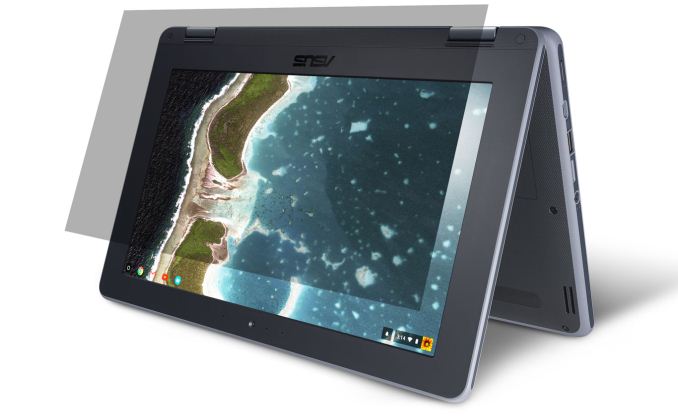

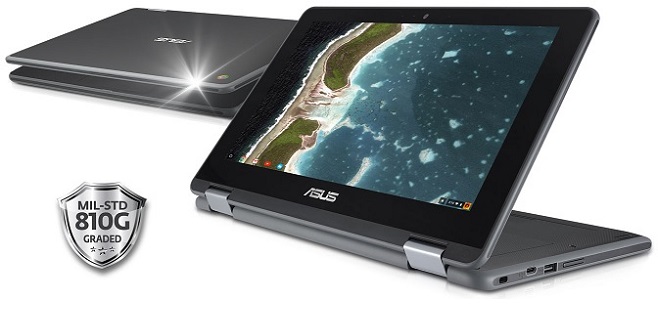


 Quote
Quote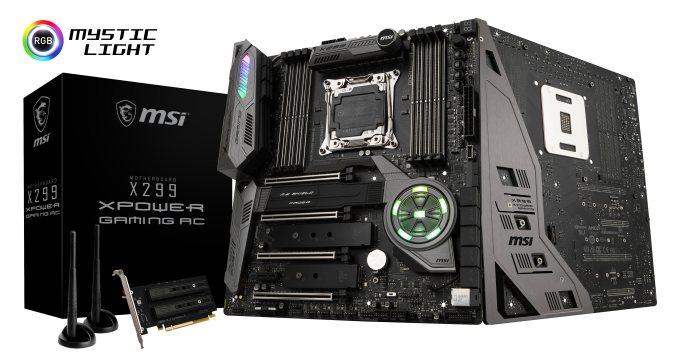
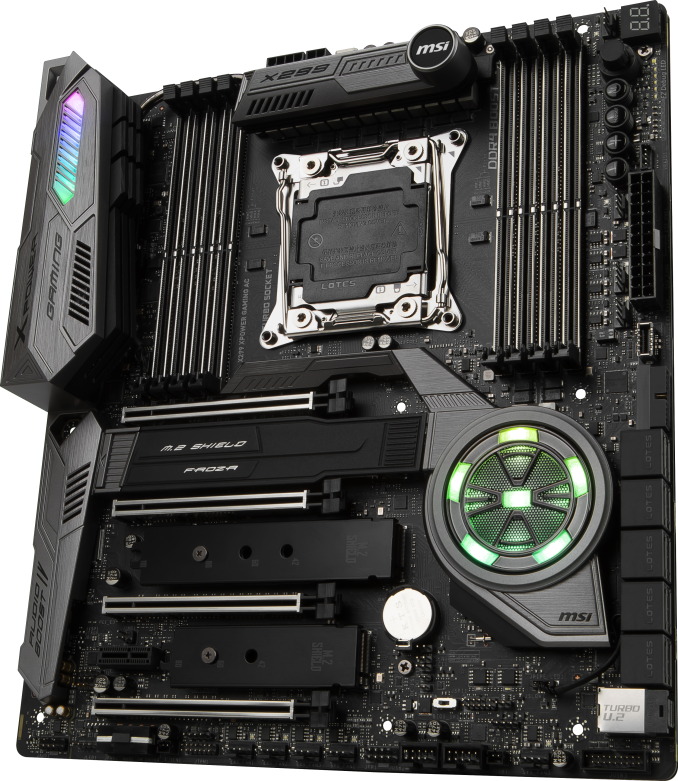
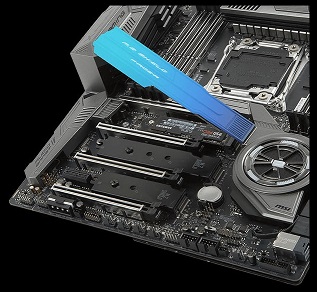
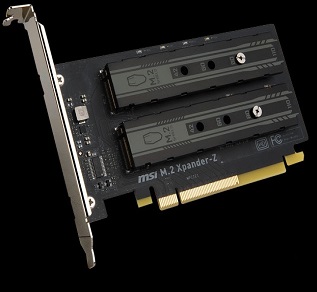

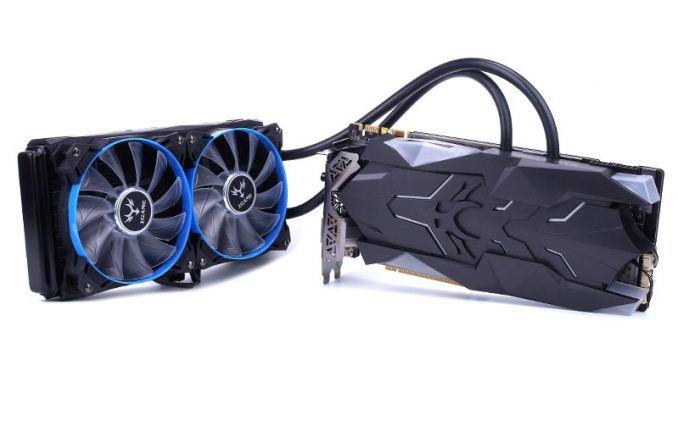
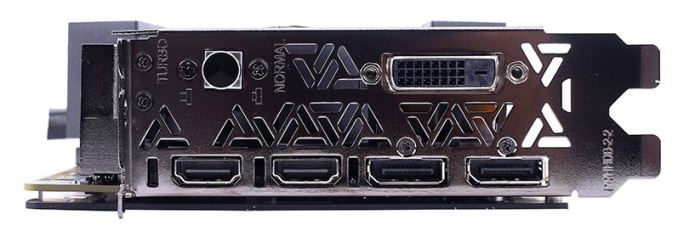

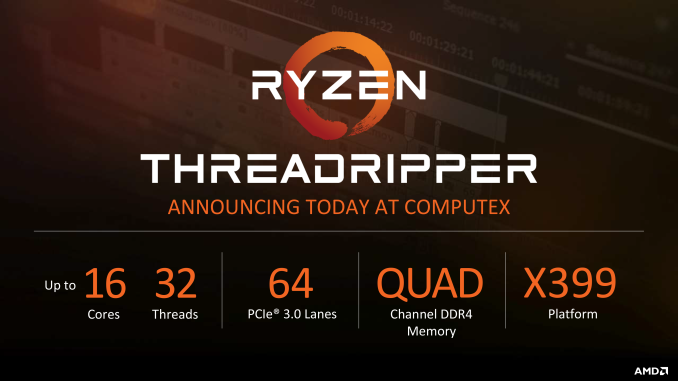
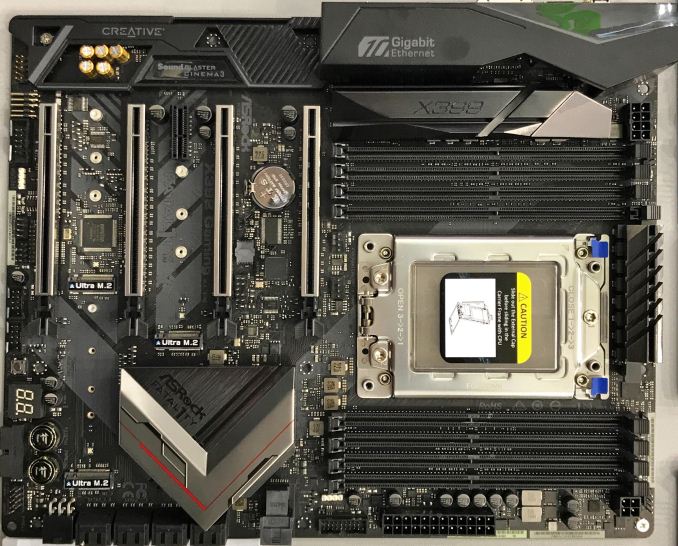
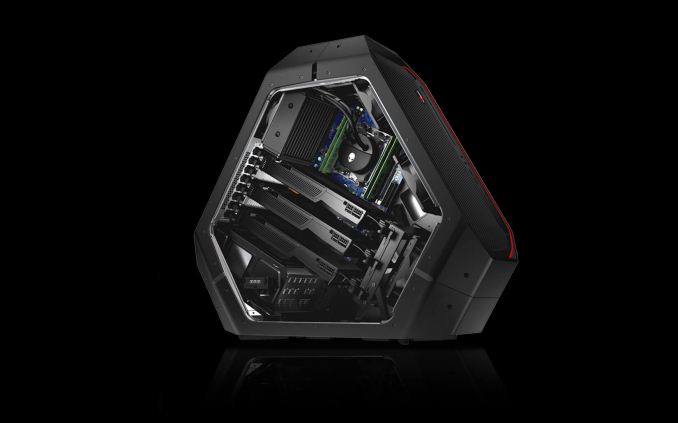
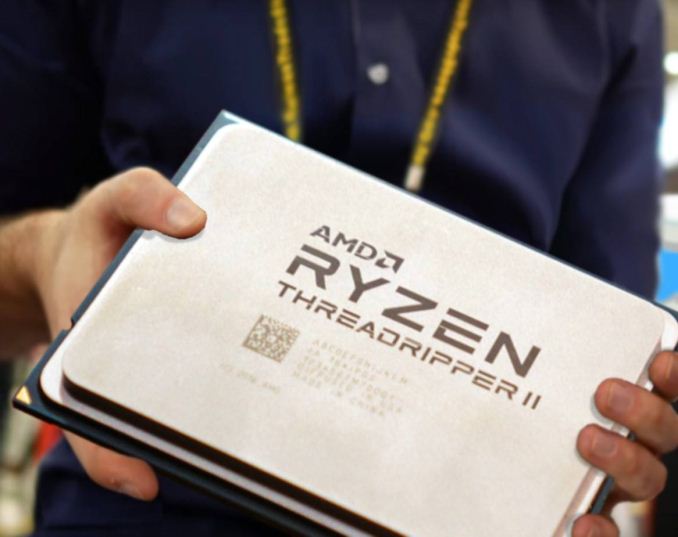
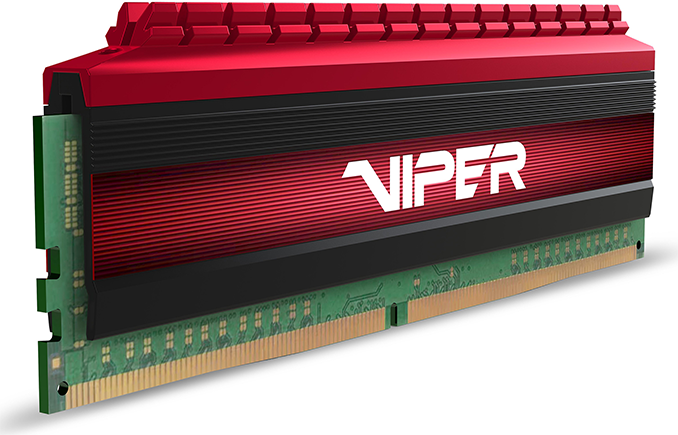
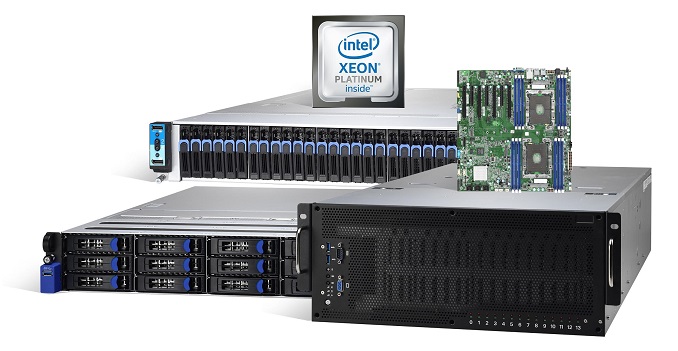
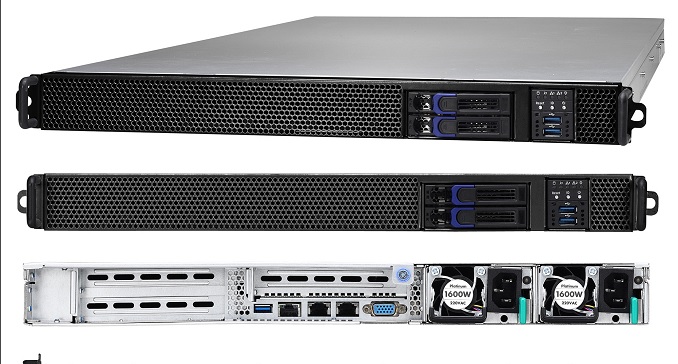
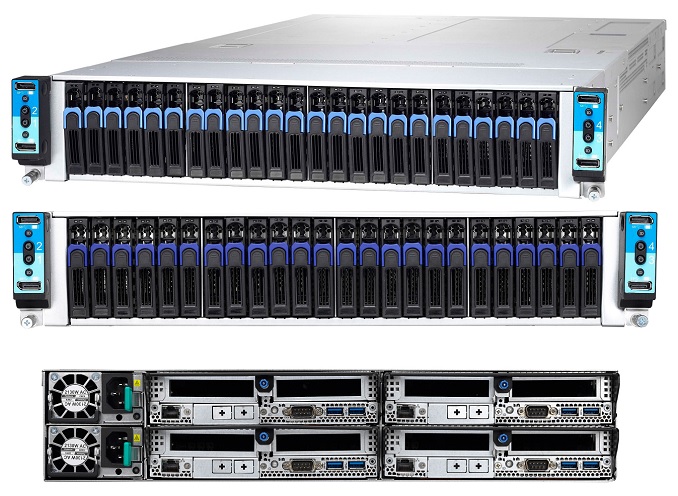
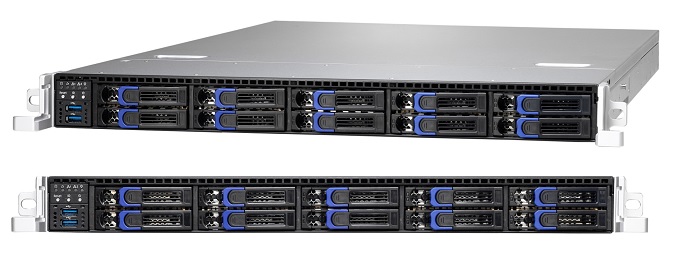
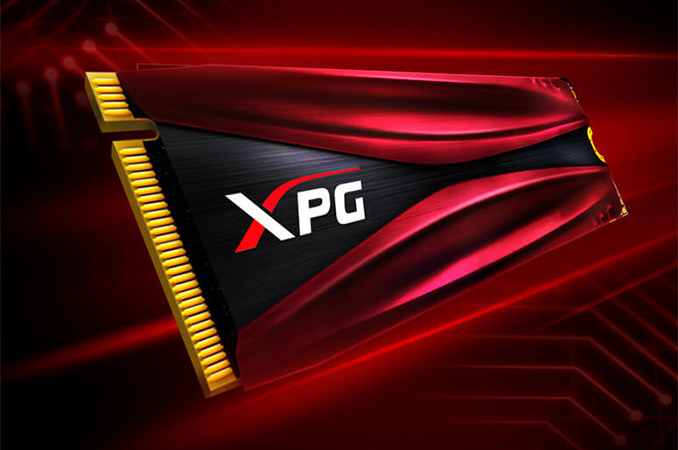
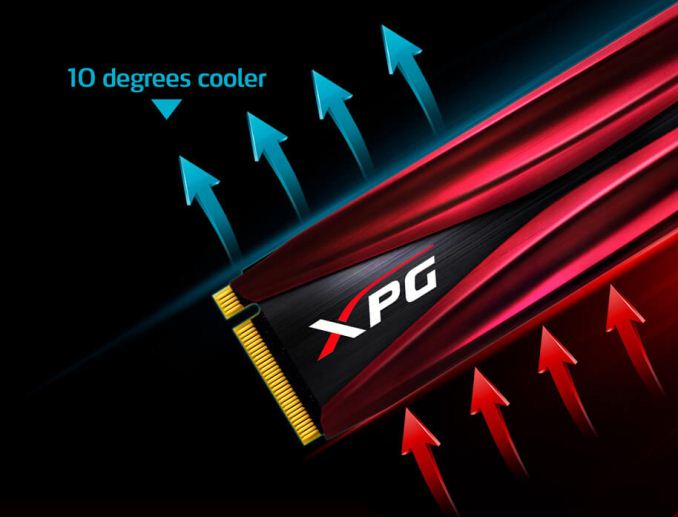
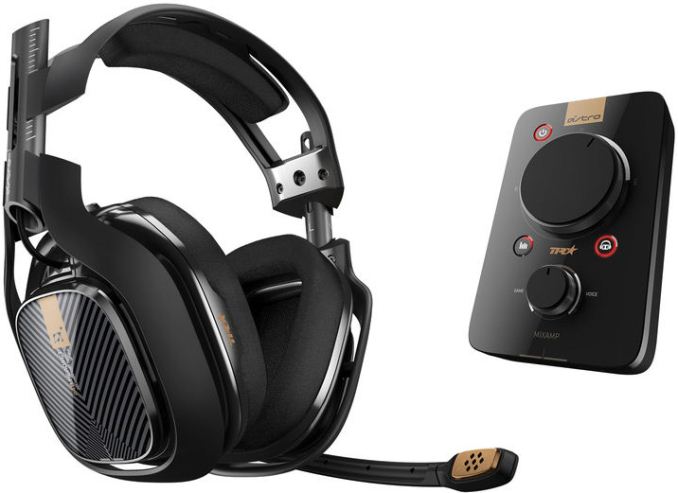

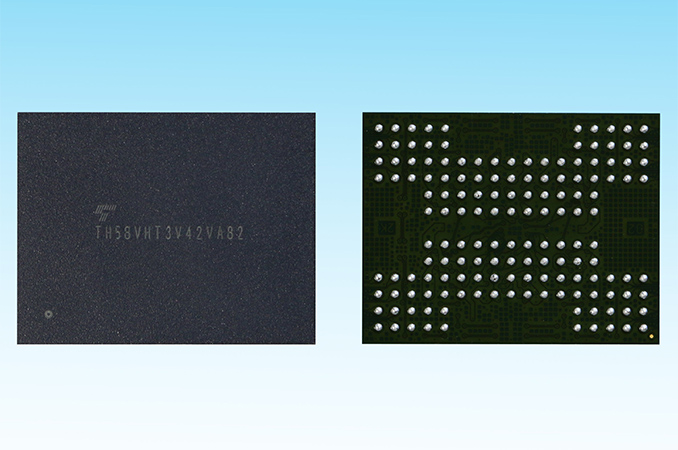

















Bookmarks